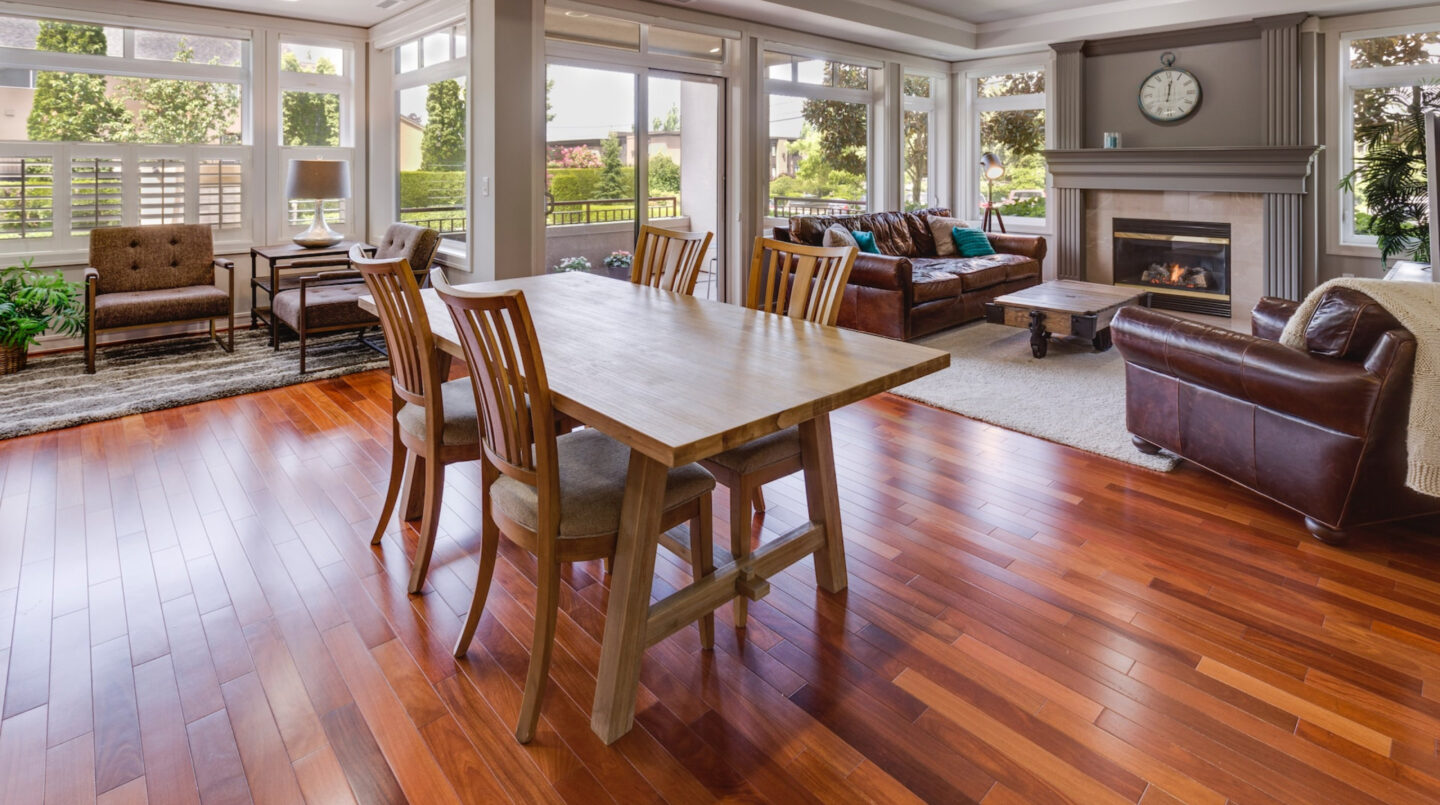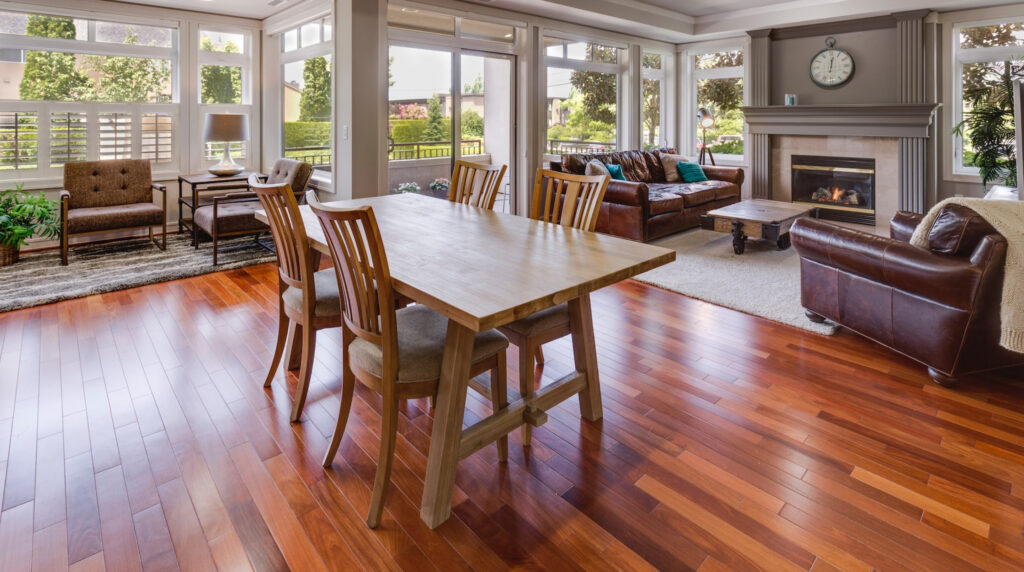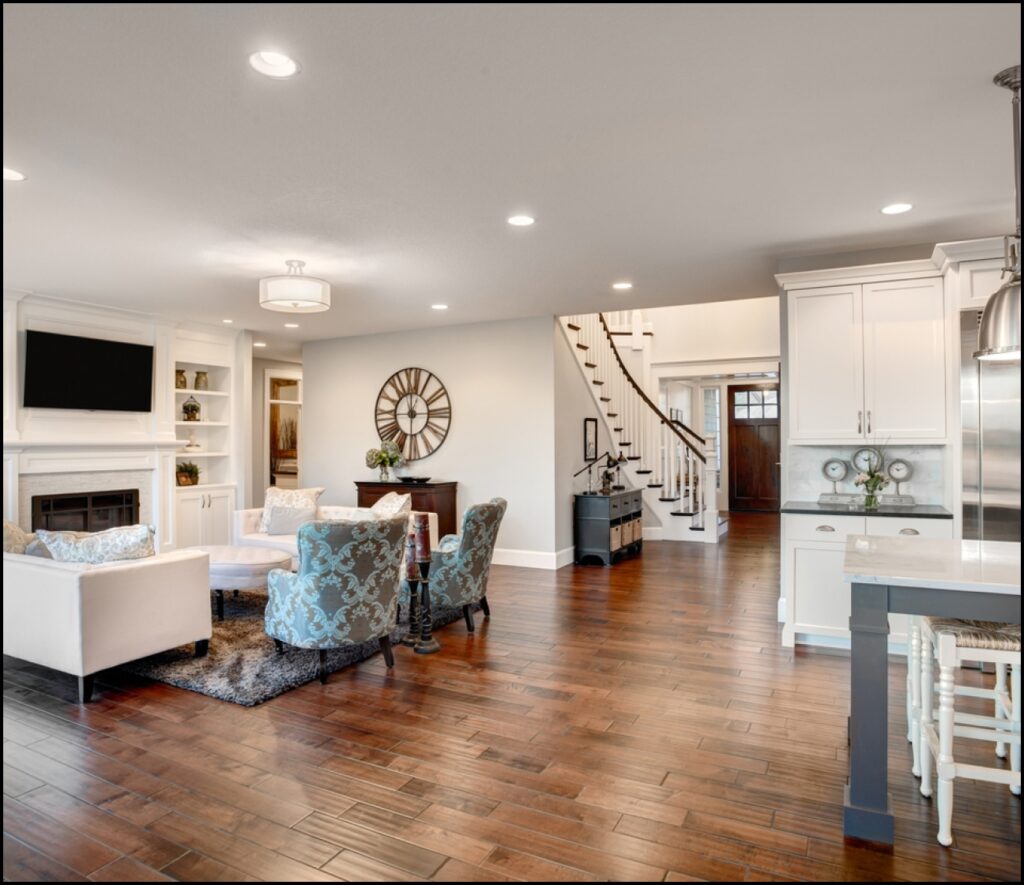
Solid Hardwood vs. Engineered Hardwood
With so many beautiful and durable hardwood options, choosing one for your project is exciting—and it can also be a challenge. Understanding the differences and similarities between solid hardwood and engineered hardwood will bring you one giant step closer to nailing down (no pun intended) the right flooring for your home.
What is solid hardwood flooring?
As the name suggests, solid wood flooring is made of solid wood throughout its thickness, usually a hardwood species, such as oak, maple, or walnut. Its significant advantage is that it can be sanded and refinished numerous times throughout its lifespan. It’s considered by many homeowners to be the “gold standard” in flooring. Constructed from one solid piece of 100% hardwood, it’s known for its durability, authenticity and timelessness.
It is milled with tongues and grooves on opposite edges so that the boards interlock when installed. It is always nailed down to the subfloor, a process that requires some skill. Because it is solid wood, this flooring can be sanded down and refinished several times over its life.
Solid hardwood is relatively easy to clean and maintain. Most floors only need sweeping and vacuuming, with the occasional mopping with a special wood cleaner to treat stains. Just avoid using water or steam to clean wood floors.

However, hardwood flooring is better for long-term maintenance because it can be sanded down and refinished several times over its lifespan to look as good as new.
Hardwood flooring has a significantly longer lifespan than most types of floorings available. Hardwood flooring can last anywhere between 30 to 100 years with the proper maintenance and care. This is why we still see some houses with hardwood floors from the 1850s.
When it comes to water and the environment, hardwood flooring is more sensitive than other flooring options. Hardwood is not recommended for installations where humidity or moisture can go through because it causes swelling and warping.
What is engineered hardwood flooring?
Engineered wood flooring looks very similar on the surface, but it is made from a relatively thin layer of hardwood bonded over a substrate of high-quality plywood. Engineered flooring is somewhat less expensive than solid hardwood, but most types can be sanded and refinished only once or twice since the surface hardwood layer is relatively thin.
Engineered wood flooring looks like solid hardwood, but its construction features a relatively thin layer of hardwood bonded over a premium-quality plywood layer that gives the flooring excellent stability. The best engineered wood flooring will have good flexibility and a durable plywood core with three to nine layers. You can count on a good-quality engineered wood floor typically lasting 25 to 30 years. It is less expensive than solid wood and more manageable for DIYers to install.
Like hardwood, engineered wood flooring only needs sweeping and vacuuming to stay clean. Occasionally mopping it with wood cleaner can help prevent stains and revitalize the top layer.
Most engineered wood floors don’t have a thick enough top hardwood layer to be sanded and refinished overtime. In most cases, they can be refinished once or twice before the hardwood layer is exhausted and you need to repair the planks.

Although engineered wood flooring can’t be refinished as often as solid hardwood, it can still last up to 30 years or more with proper maintenance. While the entire floor can’t be sanded down and refinished, one of the benefits of engineered wood flooring planks they can be easily replaced, especially those installed with the click-and-lock method.
While engineered wood flooring isn’t waterproof, it has better performance in humid locations compared to hardwood. Because plywood construction is more stable, this flooring is less susceptible to warping and swelling. However, some engineered wood flooring can include a protective layer over the hardwood veneer to protect even more against water spills and water damage.
Overall, both hardwood and engineered wood flooring have the same resistance to heat. Although, neither material is recommended for wet locations such as bathrooms and basements.
Engineered wood flooring was once regarded as a pale imitation of solid hardwood, but improvements in the product quality have eliminated this perception. Solid hardwood may hold a slight edge in prestige for some people and continues to be a top choice among professionals for adding value and durability, but the lower cost and easier installation of engineered wood flooring gives it the edge over others. In many aspects, hardwood and engineered wood floors can be used interchangeably in most homes
Contact Get It Installed
To schedule an appointment or get a free quote on flooring installation in Kansas City, contact us at 913-375-2219
